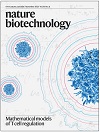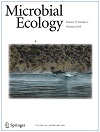Latest Publications
A monomeric StayGold fluorescent protein
 Esther Ivorra-Molla, Dipayan Akhuli, Martin B. L. McAndrew, William Scott, Lokesh Kumar, Saravanan Palani, Masanori Mishima, Allister Crow & Mohan K. Balasubramanian
Esther Ivorra-Molla, Dipayan Akhuli, Martin B. L. McAndrew, William Scott, Lokesh Kumar, Saravanan Palani, Masanori Mishima, Allister Crow & Mohan K. Balasubramanian
StayGold is an exceptionally bright and stable fluorescent protein that is highly resistant to photobleaching. Despite favorable fluorescence properties, use of StayGold as a fluorescent tag is limited because it forms a natural dimer. Here we report the 1.6 Å structure of StayGold and generate a derivative, mStayGold, that retains the brightness and photostability of the original protein while being fully monomeric.
Viral metagenomics reveals diverse virus-host interactions throughout the soil depth profile
 George Muscatt, Ryan Cook, Andrew Millard, Gary D Bending, Eleanor Jameson
George Muscatt, Ryan Cook, Andrew Millard, Gary D Bending, Eleanor Jameson
To investigate viral communities throughout the soil depth profile, we leveraged a publicly available metagenomic data set sampled from grassland soil in Northern California. In total, 10,196 non-redundant viral operational taxonomic units were recovered from soil between 20 cm and 115 cm below the surface. Viral diversity was assessed at both the population level and strain level to reveal diverse ecological and evolutionary patterns of virus-host interactions in surface and subsurface soils. Investigating viral microdiversity uncovered potential patterns of antagonistic co-evolution across both surface and subsurface soils. We have provided evidence for the potential of soil viruses to augment the remineralization of soil carbon. While we continue to yield a more comprehensive understanding of soil viral ecology, our work appeals to future researchers to further investigate subsurface viral communities.
LipIDens: Simulation assisted interpretation of lipid densities in cryo-EM structures of membrane proteins.
 T. Bertie Ansell, Wanling Song, Claire E. Coupland, Loic Carrique, Robin A. Corey, Anna L. Duncan, C. Keith Cassidy, Maxwell M. G. Geurts, Tim Rasmussen, Andrew B. Ward, Christian Siebold, Phillip J. Stansfeld, Mark S. P. Sansom
T. Bertie Ansell, Wanling Song, Claire E. Coupland, Loic Carrique, Robin A. Corey, Anna L. Duncan, C. Keith Cassidy, Maxwell M. G. Geurts, Tim Rasmussen, Andrew B. Ward, Christian Siebold, Phillip J. Stansfeld, Mark S. P. Sansom
Cryo-electron microscopy (cryo-EM) enables the determination of membrane protein structures in native-like environments. Characterising how membrane proteins interact with the surrounding membrane lipid environment is assisted by resolution of lipid-like densities visible in cryo-EM maps. Nevertheless, establishing the molecular identity of putative lipid and/or detergent densities remains challenging. Here we present LipIDens, a pipeline for molecular dynamics (MD) simulation-assisted interpretation of lipid and lipid-like densities in cryo-EM structures.
Modelling seasonality of Lassa fever incidences and vector dynamics in Nigeria
 McKendrick, James, Tennant, Warren S. D. and Tildesley, Michael J.
McKendrick, James, Tennant, Warren S. D. and Tildesley, Michael J.
Lassa fever (Lf) is a viral haemorrhagic disease endemic to West Africa and is caused by the Lassa mammarenavirus. The rodent Mastomys natalensis serves as the primary reservoir and its ecology and behaviour have been linked to the distinct spatial and temporal patterns in the incidence of Lf. While previous research has modelled the case seasonality within Nigeria, this did not capture the seasonal variation in the reproduction of the zoonotic reservoir and its effect on case numbers. To this end, we introduce an approximate Bayesian computation scheme to fit our model to the case data from 2018–2020 supplied by the NCDC. In this study we used a periodically forced seasonal nonautonomous system of ordinary differential equations as a vector model to demonstrate that the population dynamics of the rodent reservoir may be responsible for the spikes in the number of observed cases in humans.
A smooth tubercle bacillus from Ethiopia phylogenetically close to the Mycobacterium tuberculosis complex.
 Yenew, B., et al. (incl. Didelot, X)
Yenew, B., et al. (incl. Didelot, X)
The Mycobacterium tuberculosis complex (MTBC) includes several human- and animal-adapted pathogens. It is thought to have originated in East Africa from a recombinogenic Mycobacterium canettii-like ancestral pool. Here, we describe the discovery of a clinical tuberculosis strain isolated in Ethiopia that shares archetypal phenotypic and genomic features of M. canettii strains, but represents a phylogenetic branch much closer to the MTBC clade than to the M. canettii strains. Analysis of genomic traces of horizontal gene transfer in this isolate and previously identified M. canettii strains indicates a persistent albeit decreased recombinogenic lifestyle near the emergence of the MTBC. Our findings support that the MTBC emergence from its putative free-living M. canettii-like progenitor is evolutionarily very recent, and suggest the existence of a continuum of further extant derivatives from ancestral stages, close to the root of the MTBC, along the Great Rift Valley.
Spatio-temporal surveillance and early detection of SARS-CoV-2 variants of concern: a retrospective analysis
 Massimo Cavallaro, Louise Dyson, Michael J Tildesley, Dan Todkill, Matt J Keeling
Massimo Cavallaro, Louise Dyson, Michael J Tildesley, Dan Todkill, Matt J Keeling
The SARS-CoV-2 pandemic has been characterized by the repeated emergence of genetically distinct virus variants of increased transmissibility and immune evasion compared to pre-existing lineages. Here we study the spatial invasion and early spread of the Alpha, Delta and Omicron (BA.1 and BA.2) variants in England from September 2020 to February 2022 using the random neighbourhood covering (RaNCover) method. This is a statistical technique for the detection of aberrations in spatial point processes, which we tailored here to community PCR (polymerase-chain-reaction) test data where the TaqPath kit provides a proxy measure of the switch between variants. Retrospectively, RaNCover detected the earliest signals associated with the four novel variants that led to large infection waves in England. With suitable data our method therefore has the potential to rapidly detect outbreaks of future SARS-CoV-2 variants, thus helping to inform targeted public health interventions.
